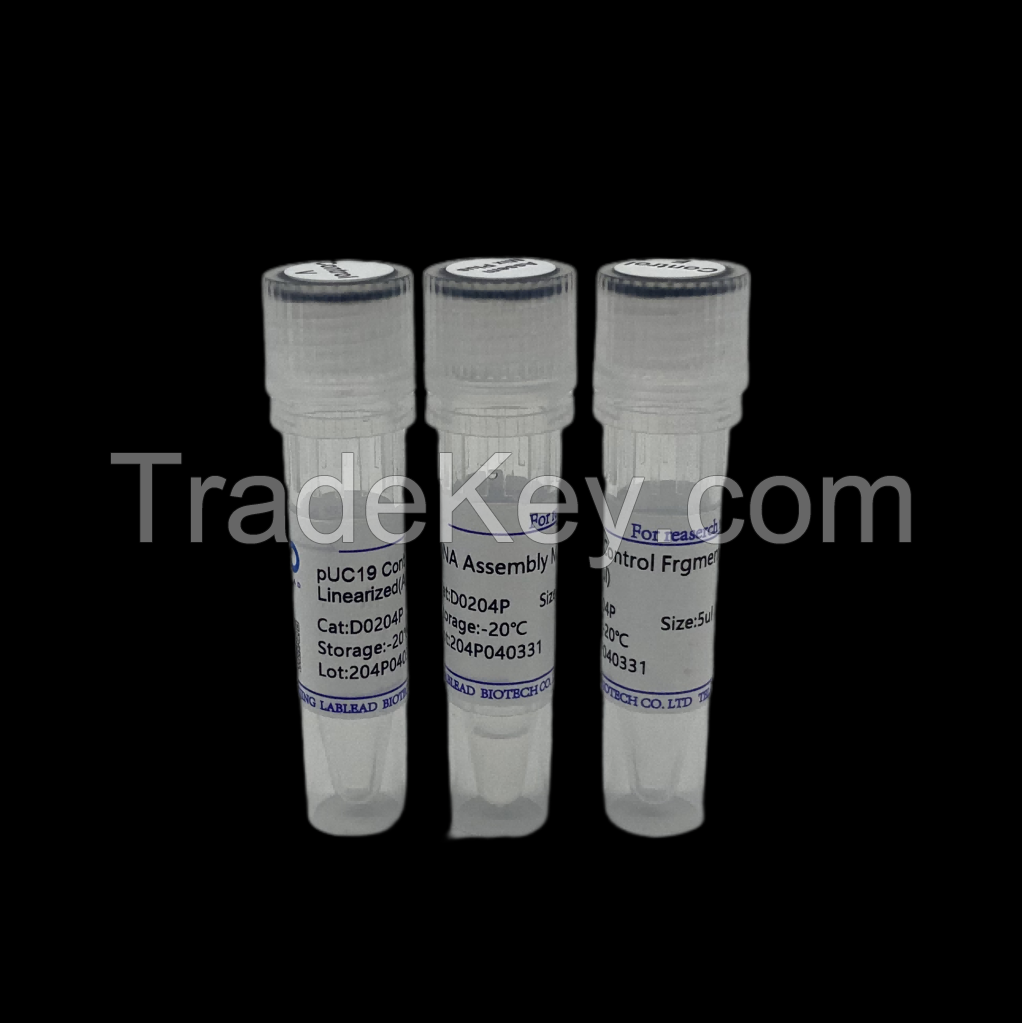

Precio FOB
Obtener el precio más reciente|
- Minimum Order
País:
China
N º de Modelo:
-
Precio FOB:
Lugar de origen:
China
Precio de pedido mínimo:
-
Cantidad de pedido mínimo:
-
Detalle de embalaje:
-
El tiempo de entrega:
7-15 days if in stock
Capacidad de suministro:
-
Tipo de pago:
-
Grupo de productos :
| Component | 10T | 25T | 50T |
| DNA Assembly Mix PLUS | 50μl | 125μl | 250μl |
|
pUC19 Control Plasmid,
Linearized (Ampr, 40 ng/μl) |
5μl | 5μl | 5μl |
| 500 bp Control Fragment (20 ng/μl) | 5μl | 5μl | 5μl |
| component | Reaction system | Negative control | Positive control (if necessary) |
| DNA Assembly Mix | 5μl | 5μl | 5μl |
| linearization carrier(ng) | 50~200 | 50~100 | pUC19 Control Plasmid,Linearized, 1μl |
| Insert fragment | 10~200ng | - |
500 bp
Control, Fragment, 1μl |
| ddH2O | To 10μl | ||
| País: | China |
| N º de Modelo: | - |
| Precio FOB: | Obtener el precio más reciente |
| Lugar de origen: | China |
| Precio de pedido mínimo: | - |
| Cantidad de pedido mínimo: | - |
| Detalle de embalaje: | - |
| El tiempo de entrega: | 7-15 days if in stock |
| Capacidad de suministro: | - |
| Tipo de pago: | - |
| Grupo de productos : | Molecular Biology |
